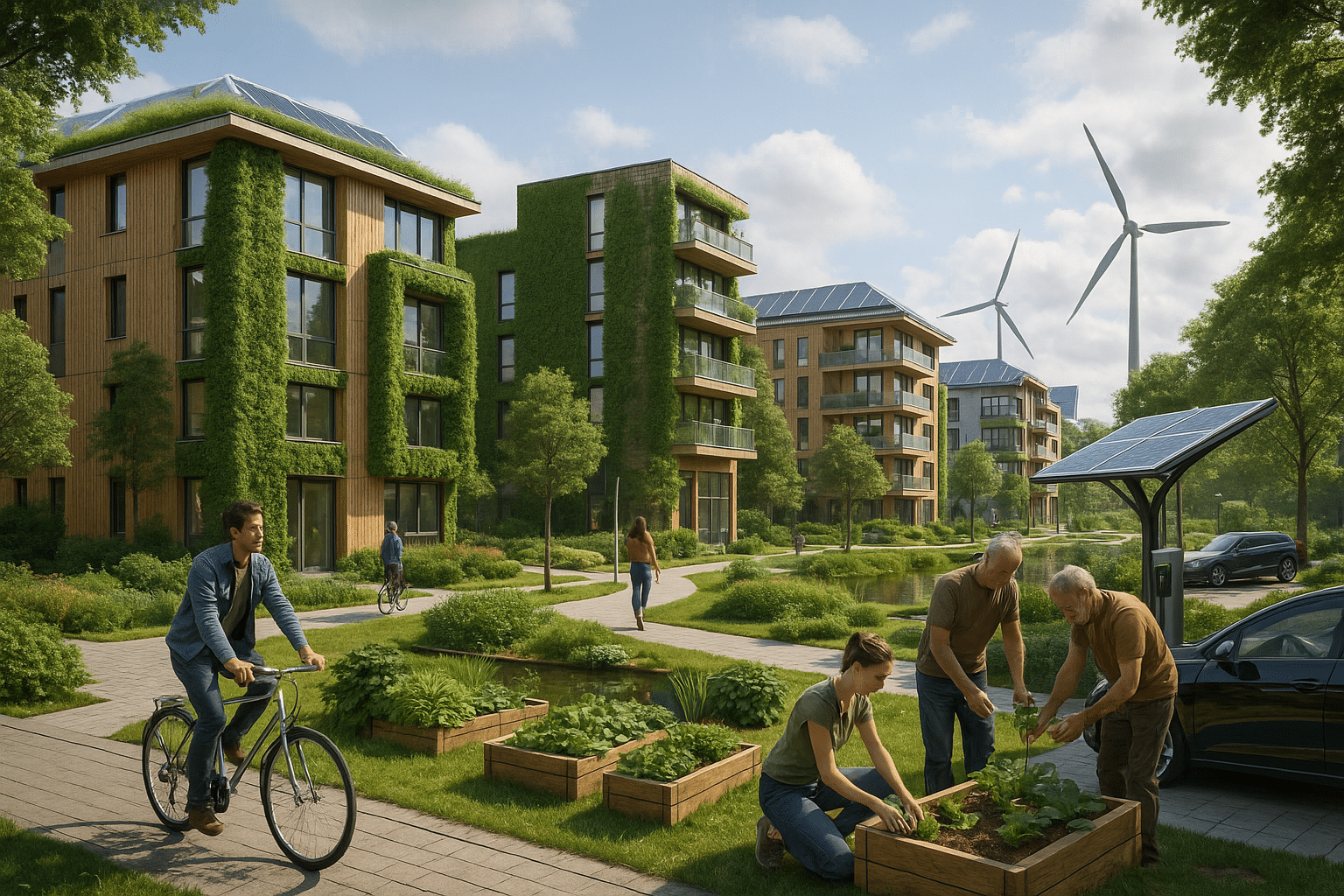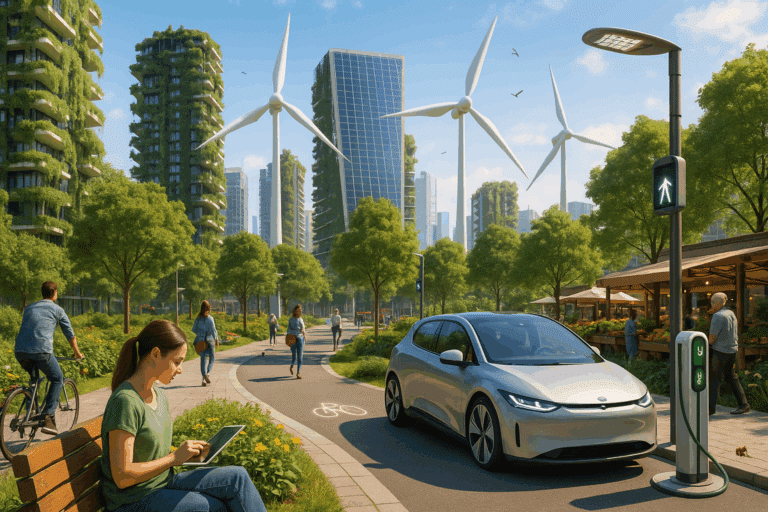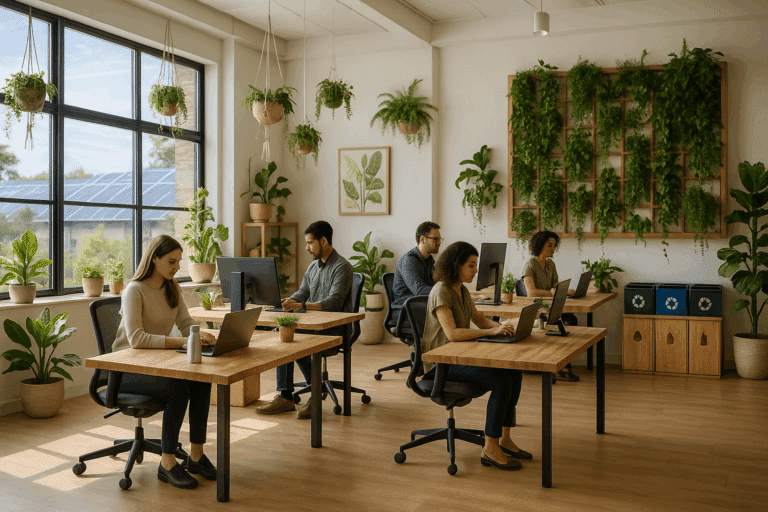This article dives into the intricacies of Green Building Standards and how they pave the way for eco-friendly construction, promoting a sustainable future.🌍
As a society, we have become more conscientious about the role we play in environmental conservation. This is reflected in various industries, with construction being no exception. The incorporation of green building standards is a crucial part of the shift towards sustainable construction practices. However, understanding these standards can be a complex task given the myriad of technical details involved. But fret not! This comprehensive guide aims to demystify green building standards, explaining in clear and concise terms what they mean, their importance, and how they can be applied to create eco-friendly constructions.🏗️
These standards, developed by leading environmental and construction bodies globally, provide guidelines for designing, constructing, and maintaining buildings in a manner that reduces their impact on the environment. However, their technical nature can often make them seem daunting. We will break down these standards to make them more accessible, helping architects, contractors, developers, and even homeowners understand their role in creating a sustainable future.🌱
We’ll begin by outlining the history and evolution of green building standards, tracing back their roots and identifying the key players who shaped their development. This journey through time will provide valuable context, illustrating how our understanding of sustainability in construction has evolved and why these standards are more important than ever before.⌛
Next, we delve into the specifics of various green building standards like LEED, BREEAM, and Green Star among others. We will explain their grading systems, the categories they encompass, and how they can be achieved. In doing so, we will not only increase your understanding of these standards but also equip you with the knowledge to effectively implement them in your projects.🔍
Subsequently, we will highlight the benefits of adhering to green building standards. This section will touch upon the environmental, social, and economic advantages that green buildings bring. We will bring forward real-world case studies and statistical evidence to underline these benefits, thereby making a compelling case for the adoption of eco-friendly construction practices.🌳
Lastly, we’ll address the challenges and misconceptions surrounding green building standards. While they are a powerful tool for sustainable construction, they are not without their drawbacks and misconceptions. By shedding light on these issues, we aim to present a balanced view of green building standards, aiding you in making informed decisions for your construction projects.🧐
Our goal is to provide a comprehensive yet understandable guide to green building standards. We hope to inspire construction professionals and enthusiasts alike to embrace these guidelines, thereby playing a pivotal role in building a sustainable future.💡
Ready to embark on this enlightening journey? Let’s delve right in!
Embracing the Green: A Comprehensive Introduction to Green Building Standards
Green building is more than a buzzword in today’s construction industry – it’s a necessity. As the impact of human activities on the environment becomes increasingly apparent, the push for sustainable, eco-friendly construction methods is stronger than ever. But what exactly does it mean to “go green” in the building industry, and how do you navigate the myriad of green building standards out there? Let’s dive deep into the world of green building standards and demystify the complexities that surround this important topic.
Green building standards are guidelines and criteria set by organizations to ensure that construction projects are environmentally responsible and resource-efficient throughout a building’s life-cycle. These standards aim to reduce the overall impact of the built environment on human health and the natural environment. This is achieved by addressing various aspects of construction, including siting, design, construction, operation, maintenance, renovation, and deconstruction.
In this article, we will cover some of the most prominent green building standards, their benefits, and how they compare. We will also provide you with valuable resources, like YouTube videos and tables, for a more comprehensive understanding of these standards. So let’s embark on this green journey together!
Leading Green Building Standards: A Comparative Look
Several green building standards have been developed over the years, each with its own set of criteria and focus areas. Here, we delve into three of the most popular green building standards: LEED, BREEAM, and Living Building Challenge.
| Standard | Focus | Criteria |
|---|---|---|
| LEED (Leadership in Energy and Environmental Design) | Energy efficiency, water conservation, CO2 emissions reduction, improved indoor environmental quality. | Sustainable site development, water savings, energy efficiency, materials selection, indoor environmental quality. |
| BREEAM (Building Research Establishment Environmental Assessment Method) | Sustainability in buildings, master planning projects, infrastructure and landscape projects. | Energy, health and wellbeing, innovation, land use, materials, management, pollution, transport, waste, water. |
| Living Building Challenge | Create spaces that, like a flower, give more than they take. | Place, water, energy, health & happiness, materials, equity, beauty. |
To gain a more thorough understanding of each of these standards, check out the video “Green Building Rating Systems Explained” by The Greenage.
Benefits of Implementing Green Building Standards
Adopting green building standards can bring about numerous benefits, ranging from environmental to economic and health-related advantages. Let’s explore these in more detail.
Environmental Benefits
Green buildings significantly reduce the impact on the environment by minimizing waste, pollution, and environmental degradation. They efficiently use resources, reduce energy consumption, and promote the use of renewable and recyclable materials.
Economic Benefits
While green buildings may have higher upfront costs, they offer significant long-term savings. They are energy and water-efficient, leading to lower operating costs. They can also increase property values and lead to higher occupancy rates.
Health and Social Benefits
Green buildings improve the quality of life for their occupants. They enhance air and water quality, reduce noise pollution, and provide access to natural light and views. They also promote healthier lifestyle choices, like biking and walking.
To learn more about the benefits of green building, watch “The Benefits of Green Building” by Green Energy Futures.
Challenges and Solutions in Implementing Green Building Standards
While the benefits of green building are clear, the path to achieving these benefits can be fraught with challenges. However, with the right approach and resources, these obstacles can be overcome.
High Initial Costs
Green buildings often involve higher upfront costs than traditional buildings. However, these can be offset by the long-term savings in energy and water consumption, and the increased lifespan of the building.
Lack of Awareness and Understanding
Many people lack awareness and understanding of green building standards, which can hinder their implementation. This can be addressed by educational initiatives and resources, like this article, that aim to demystify green building standards.
Regulatory Barriers
Regulatory barriers can pose challenges to green building, particularly in regions where green building standards are not recognized or incorporated into local building codes. Advocacy and policy change can play a crucial role in overcoming these barriers.
For more insights into overcoming these challenges, watch “Challenges in Green Building: How to Overcome Them” by Green Building Council.
Getting Certified: How to Implement Green Building Standards
Implementing green building standards and achieving certification can seem like a daunting task. However, by breaking it down into manageable steps, the process becomes much more approachable.
Understanding the Standards
The first step is to thoroughly understand the green building standards relevant to your project. This involves studying the criteria, requirements, and certification process for the chosen standard.
Planning and Designing
Once you have a firm grasp of the standards, the planning and design phase can begin. This includes considering the site, materials, energy and water systems, and other factors in accordance with the standards.
Construction and Certification
During the construction phase, it’s essential to adhere to the standards and document all processes for certification purposes. Upon completion, the building can be evaluated for certification.
For a more detailed look into this process, check out “How to Build a Green Building” by Green Building Council.
Building a sustainable future is not an option, but a responsibility. By understanding and implementing green building standards, we can contribute to a healthier, greener, and more sustainable world. So, let’s embrace the green and make a difference!

Conclusion
In conclusion, we have journeyed through a comprehensive exploration of our topic – the intersection of Information Technology and Engineering. We have delved deep into the complexities, examined the intricacies, and emerged with a better understanding of this remarkable field. The world of IT and engineering is vast and endlessly fascinating, and it’s a privilege to help guide you through it.
We began by discussing the essential role of IT in modern engineering. With the ever-growing demand for efficiency, productivity, and innovation, IT has become a vital part of engineering processes, systems, and solutions. We addressed how various IT tools, techniques, and technologies are utilized in engineering, and how they contribute to enhanced engineering outcomes.
We also tackled the crucial topic of software engineering, diving into its principles, processes, and practices. Our exploration was enriched with insights into the development life cycle, methodologies, and the role of software engineering in creating robust, reliable, and high-performance software solutions.
We must remember that this journey does not end here. The world of IT and engineering is evolving at a breakneck pace. New technologies, methods, and possibilities are emerging every day, and it is crucial to stay informed and engaged. Therefore, I encourage you to continue exploring, learning, and applying the knowledge you’ve gained.
I invite you to comment below and share your thoughts, questions, or experiences related to the topics discussed. Your engagement is not only appreciated but also vital to fostering a vibrant and knowledgeable community. So, don’t hesitate to participate and share this article with others who might find it useful or interesting.
Moreover, for further research, I recommend exploring resources like the [Institute of Electrical and Electronics Engineers](https://www.ieee.org/) and the [Association for Computing Machinery](https://www.acm.org/). These platforms provide a wealth of information and research on the latest developments in IT and engineering.
Thank you for joining me on this intellectual journey. I hope the knowledge and insights shared have been enlightening and beneficial. As we continue to explore the fascinating world of IT and engineering, I look forward to providing more in-depth and engaging content. So, keep exploring, keep learning, and remember – the world of IT and engineering holds immense possibilities. 🚀🌐🔍
[Reference List]
Explore. Learn. Innovate.💡



